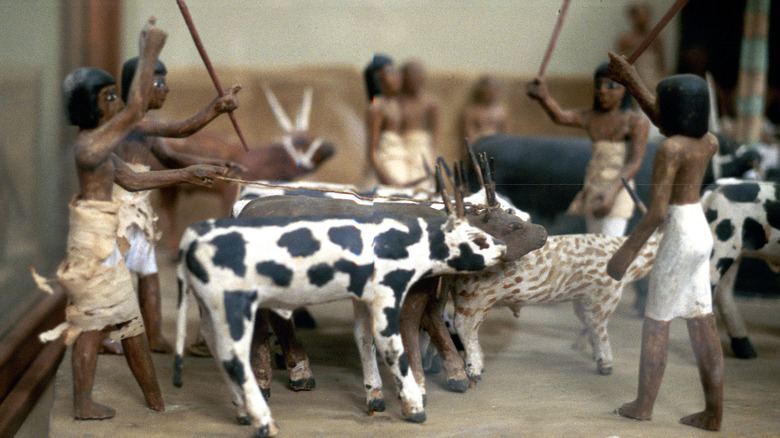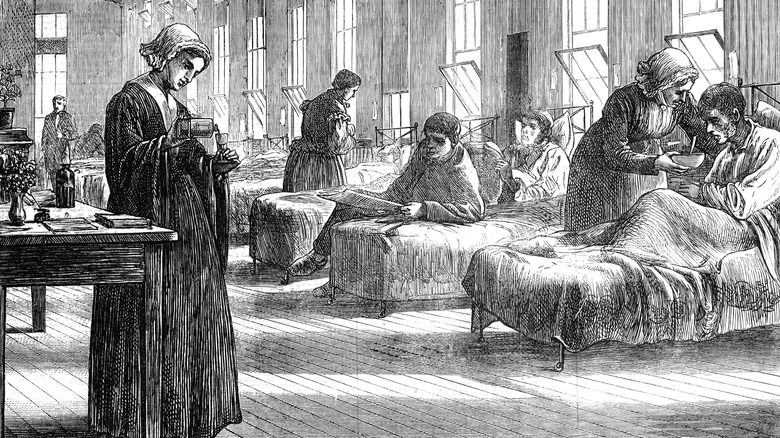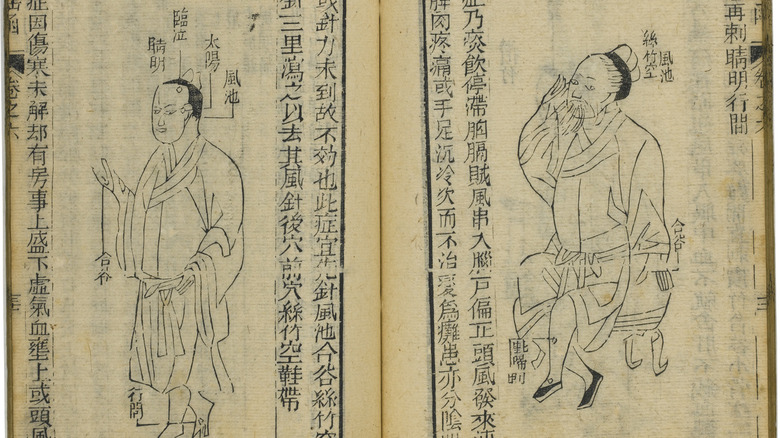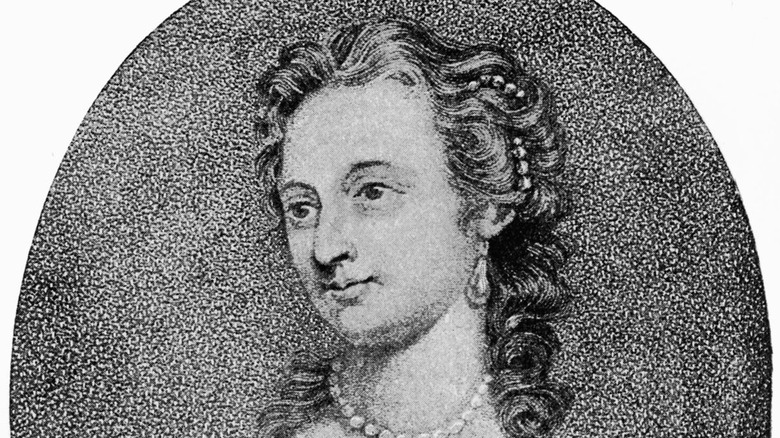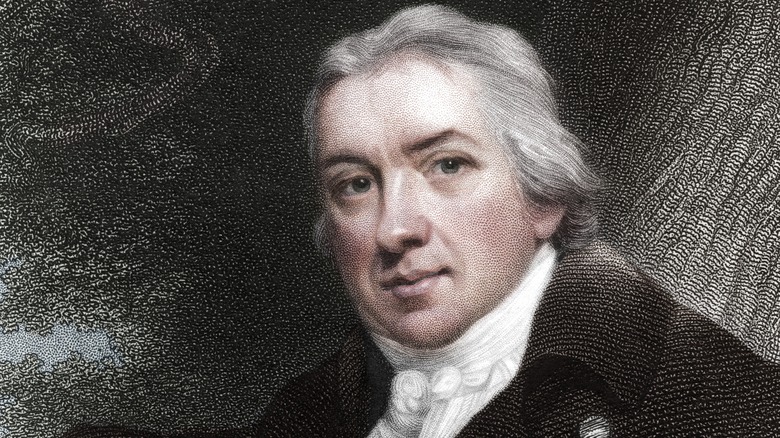Who Invented Vaccines?
In 2020, the world was made acutely aware of the importance of vaccines when the SARS-CoV-2 virus — or the "novel coronavirus," as it was called at the time — emerged as a major public health threat. As millions died worldwide, the pharmaceutical industry raced to get a vaccination against the threat up and running, taking months to complete a process that could otherwise take decades (via Medical News Today).
In recent decades, mass vaccination has been credited with the eradication of smallpox and the near-eradication of polio. Other diseases, such as measles, could be on track for eventual eradication but remain a public health threat, at least in part due to the trend of parents choosing not to vaccinate, as The Public Health Advocate reports.
Vaccines, as we know them, have been a thing in Western medicine for over 200 years, although the ancient Chinese were doling them out centuries earlier (via Science Focus).
The history of viruses and humanity
Ever since H. sapiens emerged as a species approximately 200,000 years ago, we've evolved to handle much of what nature throws at us. Viruses, being extremely primitive life forms (if they count as life forms at all), predate us by tens of billions of years, and while most of them are handled by our immune system with aplomb, a few can sicken us or even kill us.
According to Science Daily, viruses (and also parasites) really started becoming a problem for us when we began domesticating animals. Prior to domestication, humans and other animals lived separately, but when we domesticated them, we started exposing each other to viruses and parasites that we carried. Dogs exposed us to rabies, for example, and domesticated fowl such as chickens exposed us to various iterations of bird flu. The domestication of cows meant that humans would develop cowpox, and this disease played a crucial role in the development of vaccines (at least in the West) millennia later.
Smallpox was unstoppable
One of the worst diseases in the history of humankind, if not the worst, might be smallpox. As Vox reports, there was a time when the disease killed tens of millions of people per year, and that's just since we've been recording these things; who knows how many died of the disease in pre-history. And there was little to no getting away from it — whether you were rich or poor, king or knave, you could be exposed to smallpox, and odds were good it would kill you. In fact, millions of natives in North and South America died when Europeans brought smallpox to the New World, their immune systems incapable of fighting off this "new" disease.
What's more, smallpox would kill you slowly and painfully over the course of several days, and victims were covered with painful, oozing boils. According to the Centers for Disease Control and Prevention, those who survived it were often left with scars or were even blinded. Though other viral illnesses have also bedeviled humans throughout history, smallpox has always been the worst, and it was this disease that spurred on the creation of vaccines.
The ancient Chinese had vaccinations centuries before the West
Although vaccinations — as we know them in Western medicine — first became a thing in the late 1700s, the ancient Chinese had figured them out centuries before, according to The College of Physicians of Philadelphia. The ancient Chinese practice (which may also have been practiced in ancient India) was remarkably similar to the eventual European practice, both in how it was carried out and in what it was intended to prevent. Specifically, the ancient Chinese, beset by smallpox just as much as Westerners, stumbled upon the concept of variolation — that is, deliberately infecting a person with tissue or other matter from a person infected with smallpox. In the Chinese case, the scabs from a smallpox victim would be ground up and then blown into the nostrils of a non-sick person. Another method, eventually adopted by Europeans, involved taking scabs from a smallpox victim and rubbing them into the skin of a non-sick person.
European traders wrote about the Chinese practices as early as the 1500s, and according to Science Focus, records of the practice there date back to the 10th century. Indeed, the practice may even go as far back as 200 B.C.
Lady Mary Wortley Montagu and variolation
By the early 1700s, variolation had spread from Asia to Africa and was being practiced in Turkey, the metaphorical border between Europe and Asia (per the National Library of Medicine). The process, as explained in the previous slide, was crude, but it worked, more or less: about 1-2% percent of variolated individuals died, but it was better than the 30% or more who died from smallpox itself. In 1717, a British aristocrat named Lady Mary Wortley Montagu learned about the process and decided it might work in Britain. In what may be one of the most unethical experiments in the history of science, several prisoners and orphans were variolated, and when they all survived, the practice became widespread; even the royal family was variolated.
Of course, variolation was never foolproof. In addition to the small percentage that died from the process, there was also the matter that variolated individuals were infectious and could spread the disease to others, causing mini epidemics.
Cowpox, smallpox, and Dr. Edward Jenner
Remember a few paragraphs ago, when we mentioned that the domestication of cows would play role in the development of vaccines? Here's where they come in: By the late 1700s, Europeans had figured out that milkmaids — women and girls who milked cows — would sometimes come down with cowpox but were immune to smallpox, as the National Library of Medicine explains. Jenner wanted to prove this notion scientifically, and in a broader sense, was keen to figure out if exposing a person to a mild disease could protect them against a more serious one. And in yet another extremely unethical science experiment, he deliberately exposed an 8-year-old boy to cowpox and then, later, exposed him to smallpox, as Science Focus explains. The lad didn't come down with smallpox, and the idea of vaccination as we know it today was born.
Jenner wasn't the first person to see a connection between cowpox and smallpox, but he was the first person to study it systematically and, more importantly, have his work published. A century later, according to the College of Physicians of Philadelphia, Louis Pasteur developed a rabies vaccine, setting into motion a century of innovation in vaccine research. Eventually, inoculations against polio, measles, mumps, rubella, and other dread diseases were developed.

